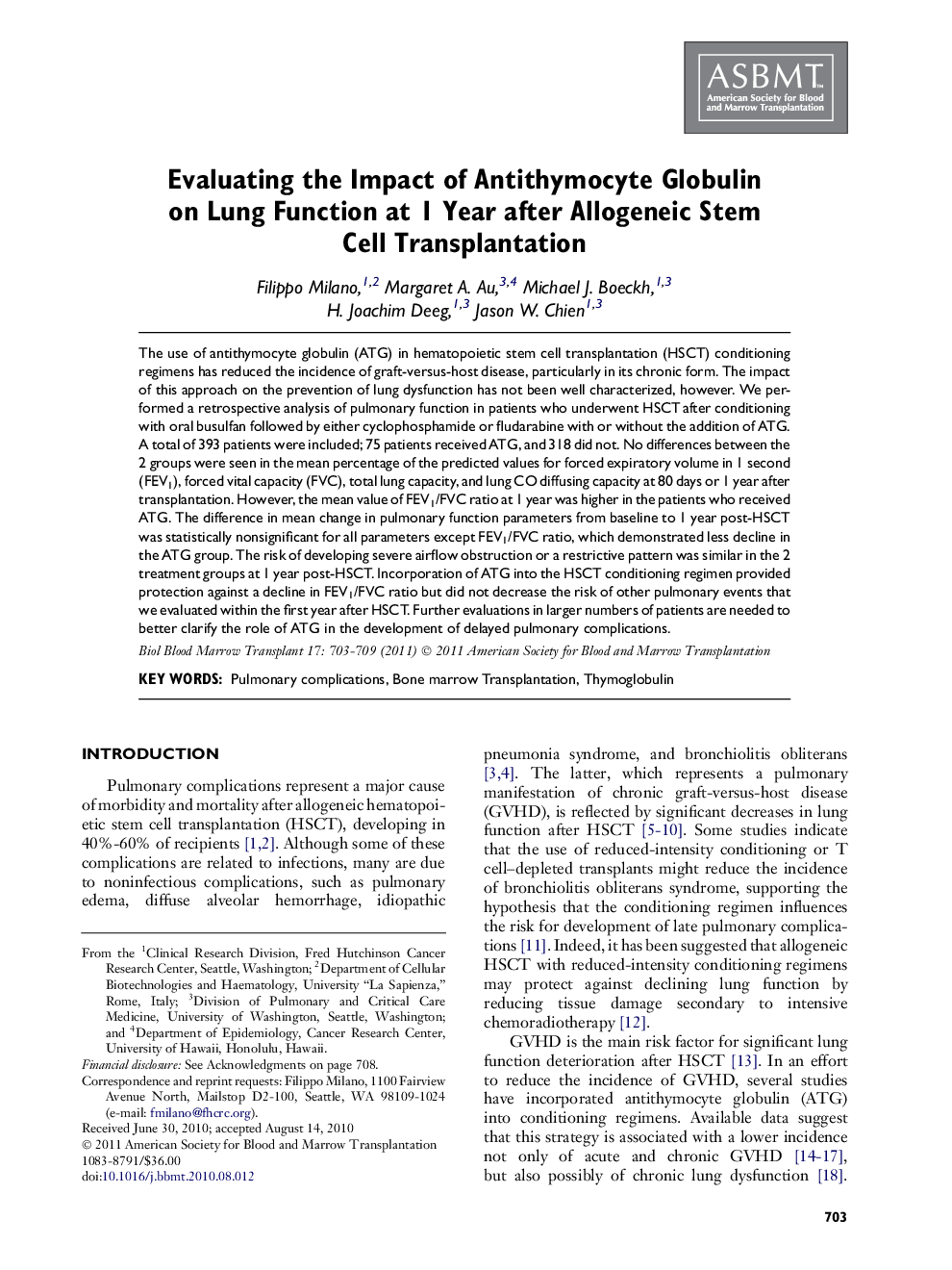| Article ID | Journal | Published Year | Pages | File Type |
|---|---|---|---|---|
| 2105527 | Biology of Blood and Marrow Transplantation | 2011 | 7 Pages |
The use of antithymocyte globulin (ATG) in hematopoietic stem cell transplantation (HSCT) conditioning regimens has reduced the incidence of graft-versus-host disease, particularly in its chronic form. The impact of this approach on the prevention of lung dysfunction has not been well characterized, however. We performed a retrospective analysis of pulmonary function in patients who underwent HSCT after conditioning with oral busulfan followed by either cyclophosphamide or fludarabine with or without the addition of ATG. A total of 393 patients were included; 75 patients received ATG, and 318 did not. No differences between the 2 groups were seen in the mean percentage of the predicted values for forced expiratory volume in 1 second (FEV1), forced vital capacity (FVC), total lung capacity, and lung CO diffusing capacity at 80 days or 1 year after transplantation. However, the mean value of FEV1/FVC ratio at 1 year was higher in the patients who received ATG. The difference in mean change in pulmonary function parameters from baseline to 1 year post-HSCT was statistically nonsignificant for all parameters except FEV1/FVC ratio, which demonstrated less decline in the ATG group. The risk of developing severe airflow obstruction or a restrictive pattern was similar in the 2 treatment groups at 1 year post-HSCT. Incorporation of ATG into the HSCT conditioning regimen provided protection against a decline in FEV1/FVC ratio but did not decrease the risk of other pulmonary events that we evaluated within the first year after HSCT. Further evaluations in larger numbers of patients are needed to better clarify the role of ATG in the development of delayed pulmonary complications.
